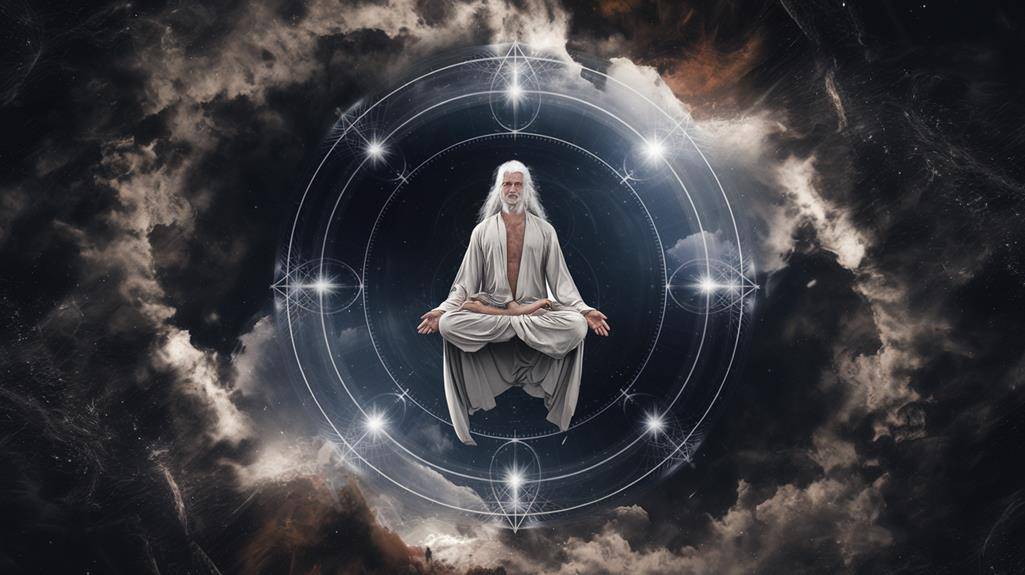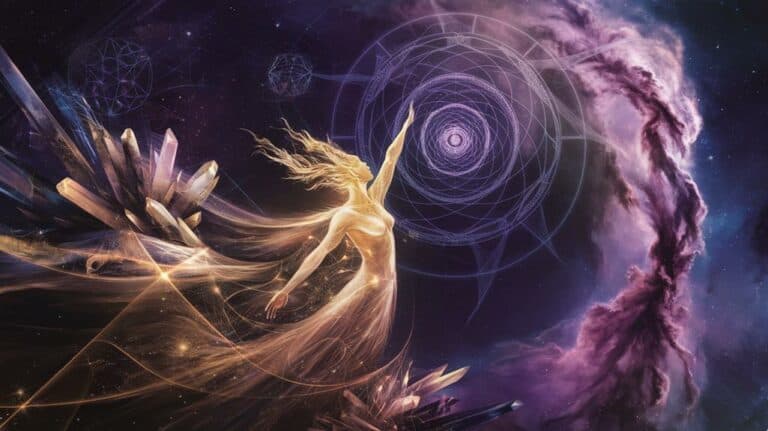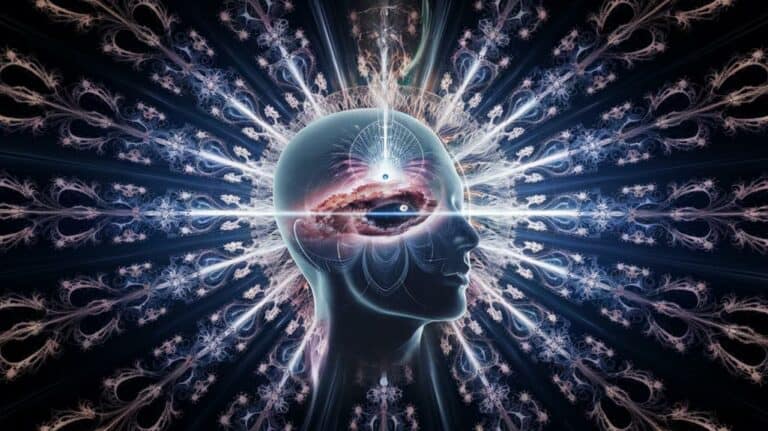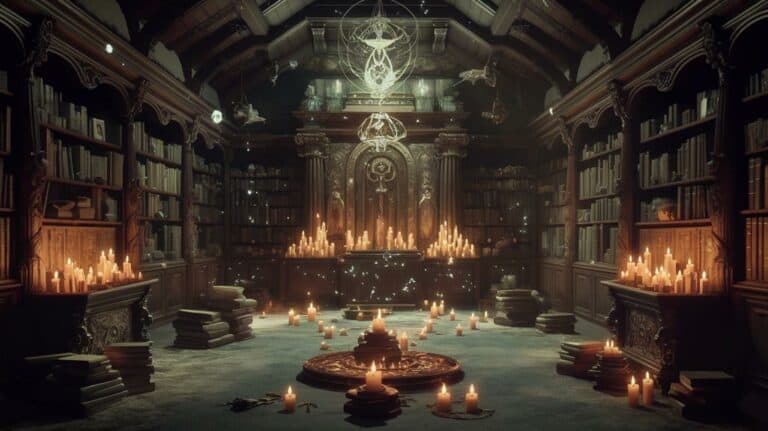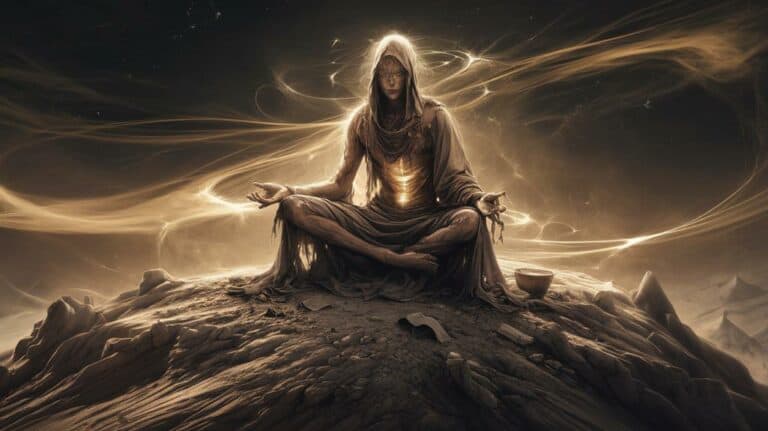Embracing the Void: 9 Mystic Paths to Emptiness
You’ve likely encountered the paradox of emptiness in your spiritual seeking – that peculiar notion that true fulfillment comes through letting go. While Western culture often pushes you to fill every moment with activity and meaning, ancient wisdom traditions point in the opposite direction. Through nine distinct pathways, from Buddhist meditation to quantum physics, you’ll discover how emptiness isn’t a void to fear but a gateway to profound understanding. Whether you’re a seasoned practitioner or simply curious about the mysteries of consciousness, these time-tested approaches offer unexpected insights into the nature of reality and your place within it.
Buddhist Meditation on Emptiness
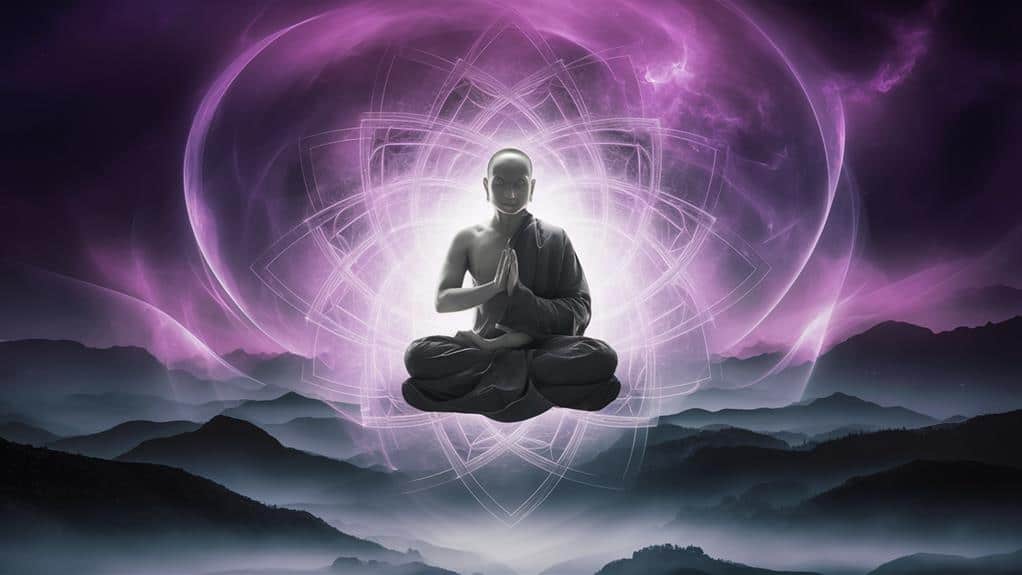
While many Buddhist practices focus on mindfulness and breath awareness, meditation on emptiness (śūnyatā) explores the fundamental nature of reality itself. You’ll discover that all phenomena, including your thoughts, emotions, and the very sense of self, lack inherent existence and arise through interdependent relationships.
As you probe deeper into emptiness meditation, you’ll begin to recognize how your mind habitually constructs solid, permanent identities out of fluid, ever-changing experiences. Through sustained investigation, you’ll see that what you’ve taken to be fixed and substantial—your body, thoughts, relationships—are actually dynamic processes without a concrete core.
You’re not being asked to negate existence entirely, but rather to see through the illusion of independent, unchanging entities. The practice isn’t about achieving a blank state of mind; it’s about directly perceiving the spacious, open nature of reality.
As you rest in this awareness, you’ll find that emptiness isn’t a void of nihilistic despair, but a liberating recognition of reality’s boundless potential. You’re invited to discover that freedom lies not in solidifying your existence, but in releasing your grip on fixed concepts and embracing the natural flow of experience.
The Desert Fathers’ Way
The Desert Fathers sought emptiness through radical simplicity, offering a stark contrast to Buddhist meditative approaches. You’ll find their path marked by complete withdrawal from society, as they ventured into Egypt’s harsh wilderness to strip away every comfort and distraction.
In their barren caves and modest huts, they’d pursue a profound emptying of self through extreme asceticism and ceaseless prayer.
You’re invited to reflect on their method of kenosis – self-emptying – achieved through deliberate deprivation. When you embrace their practices, you’ll discover that physical hunger awakens spiritual awareness, and solitude strips away social pretenses.
The Desert Fathers taught that you’ll find divine presence most purely in absolute emptiness, where you’ve released all worldly attachments and even religious concepts.
Their legacy teaches you that true emptiness isn’t found through complex philosophical systems but through ruthless simplicity.
You’ll learn that transformation comes when you’re willing to face the desert of your own heart, where nothing stands between you and the raw reality of existence.
In this stark emptiness, you’ll encounter what they called the “bright darkness” – where divine mystery reveals itself in the absence of all else.
Zen and the Empty Mind
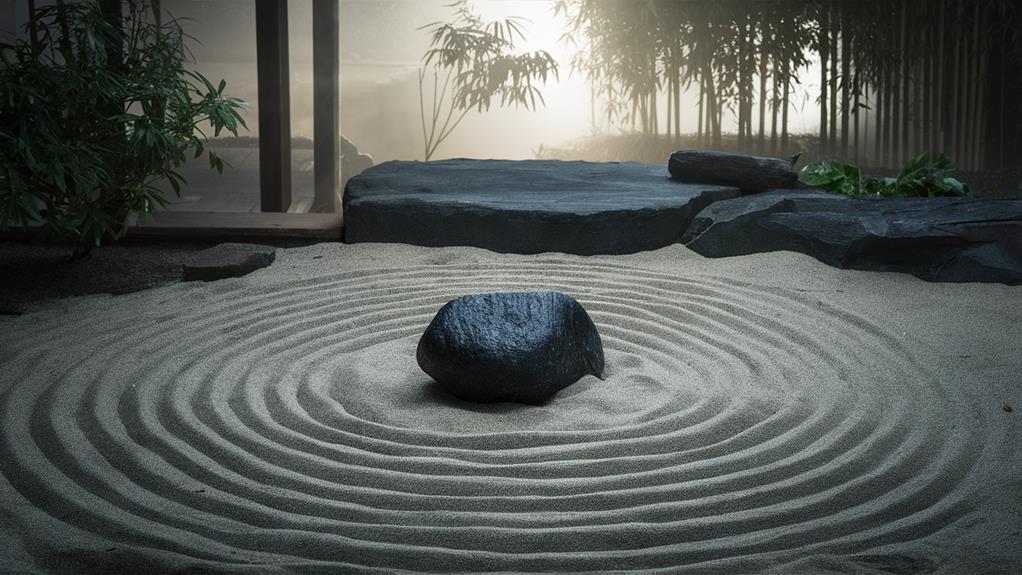
Zen teachings offer a radically different path to emptiness through mindful attention rather than physical deprivation.
You’ll find that Zen’s approach isn’t about adding more knowledge or beliefs, but rather about stripping away your accumulated mental clutter until you’re left with pure awareness. Through practices like zazen meditation, you’re invited to watch your thoughts arise and dissolve without attachment, gradually discovering the spacious silence that lies beneath your mental chatter.
In the Zen tradition, you won’t find elaborate philosophical systems or complex rituals. Instead, you’ll encounter direct pointing to the nature of mind through seemingly paradoxical koans and the practice of just sitting.
As you engage with these teachings, you’ll begin to recognize that emptiness isn’t a void to be feared, but rather the fertile ground of all possibilities. Your journey into Zen emptiness doesn’t require you to reject the world; instead, it teaches you to see through the illusion of solidity that your mind projects onto reality.
Through sustained practice, you’ll discover that the empty mind isn’t blank or lifeless – it’s infinitely alive, responsive, and free from the limitations of conceptual thinking.
Kabbalah’s Divine Nothingness
Unlike Zen’s focus on mental emptiness, Kabbalah approaches nothingness through the mystical concept of “Ayin” – a divine void that paradoxically contains all potential existence.
You’ll discover that within this primordial nothingness lies the seed of all creation, a concept that challenges your conventional understanding of reality and existence. When you contemplate Ayin, you’re touching the very essence of divine creativity, where everything and nothing coexist in perfect unity.
You’ll find that Kabbalistic teachings invite you to explore this divine nothingness through meditation and study, revealing how the infinite light of creation emerges from absolute emptiness.
As you investigate deeper into these mysteries, you’ll encounter the profound paradox: the more you understand about Ayin, the more you’ll realize how it transcends human comprehension.
Through practices like hitbodedut (meditative seclusion), you can begin to experience glimpses of this divine nothingness, where your ordinary sense of self dissolves into something vast and limitless.
This dissolution isn’t an end but a beginning – a gateway to understanding your true connection to the infinite source of all being.
Sufi Mystical Dissolution

Within Sufism’s rich mystical tradition, the concept of “fana” mirrors Kabbalah’s Ayin while offering its own unique path to spiritual dissolution. You’ll find that this profound state of annihilation doesn’t simply erase your existence but transforms it through a complete surrender of the ego into the Divine presence.
As you practice the disciplines of dhikr and contemplation, you’re guided toward experiencing the gradual dissolution of your limited self.
Through fana, you’ll discover that what appears as loss actually reveals an infinite gain. You’re not destroying yourself but disclosing your true nature as the veils of separation fall away.
The journey requires you to release your attachments, your concepts, and even your cherished spiritual identities. In this process, you’ll encounter stages of emptying – first from worldly desires, then from your own will, and finally from consciousness of your individual existence.
What emerges isn’t vacancy but presence – not absence but completion. You’ll find that as your separate self dissolves, you’re paradoxically more fully present, experiencing what Sufis call “baqa,” or subsistence in Divine unity.
This transformation reveals that you’ve never truly been separate from the Beloved.
Taoism’s Empty Vessel Practice
Through Taoism’s ancient wisdom, the practice of emptying oneself becomes a dynamic path to spiritual fulfillment.
You’ll discover that becoming an empty vessel isn’t about negating your existence but rather creating space for life’s essential energies to flow freely through you. Like water finding its natural course, you’ll learn to release rigid thoughts and predetermined notions that block your spiritual development.
In this practice, you’re invited to observe how attachment to fixed ideas creates resistance to life’s natural flow. By cultivating emptiness, you’ll paradoxically find yourself filled with profound insights and intuitive wisdom.
You’ll notice how your mind, when freed from cluttered thoughts, becomes like a clear mountain pool, reflecting truth without distortion. The practice teaches you to release your grip on control, allowing the Tao to move through you unimpeded.
As you embrace this empty vessel state, you’ll experience a profound shift in consciousness. Your awareness expands beyond individual concerns into a vast space of infinite possibility.
You’re no longer forcing outcomes but becoming one with the natural order, discovering that true power lies in yielding rather than resisting.
Hindu Contemplation of Void
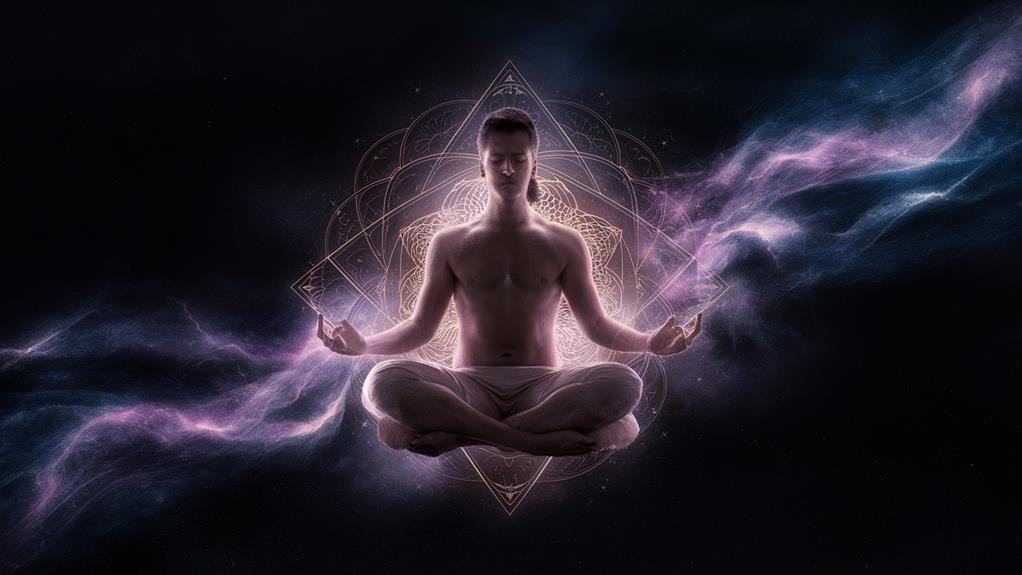
The Hindu concept of shunya, or void, offers another profound dimension to understanding emptiness. As you explore this contemplative path, you’ll discover that shunya isn’t mere nothingness, but rather a fertile ground from which all possibilities emerge.
Through meditation on shunya, you’re invited to witness the dissolution of mental constructs and experience the limitless potential that lies beyond form.
In the ancient Upanishads, you’ll find that void meditation begins with releasing your attachment to the physical world. You’re encouraged to observe how each thought, sensation, and experience arises from and returns to emptiness.
This practice doesn’t ask you to reject existence but to understand its ephemeral nature. As you sit with this awareness, you’ll notice how your consciousness expands beyond the boundaries of individual identity.
Through sustained contemplation of shunya, you’re gradually freed from the confines of conceptual thinking. You’ll recognize that what appears as emptiness actually contains the seeds of all creation.
This paradoxical understanding doesn’t separate void from form but reveals their intimate dance in the cosmic play of existence.
Quantum Physics Meets Mysticism
Modern quantum physics echoes ancient mystical insights about emptiness and consciousness.
You’ll find that quantum mechanics reveals a universe where solid matter dissolves into probability waves and empty space teems with virtual particles popping in and out of existence. This scientific understanding aligns remarkably with what mystics have intuited for millennia – that reality isn’t quite what it seems.
When you explore quantum entanglement, you’re encountering what the mystics called interconnectedness – the profound truth that nothing exists in isolation.
You’ll discover that the observer effect in quantum physics mirrors the ancient wisdom that consciousness and reality are inseparable. The quantum vacuum, with its infinite potential, resonates with the mystical concept of the void as a field of pure possibility.
You’re standing at the intersection where mathematical equations meet meditation insights, where wave functions collapse into the same truths that sages glimpsed in deep contemplation.
Through quantum physics, you’re rediscovering what mystics have long known: that emptiness isn’t merely absence, but rather the dynamic ground of all being, pregnant with infinite creative potential.
Sacred Silence and Stillness
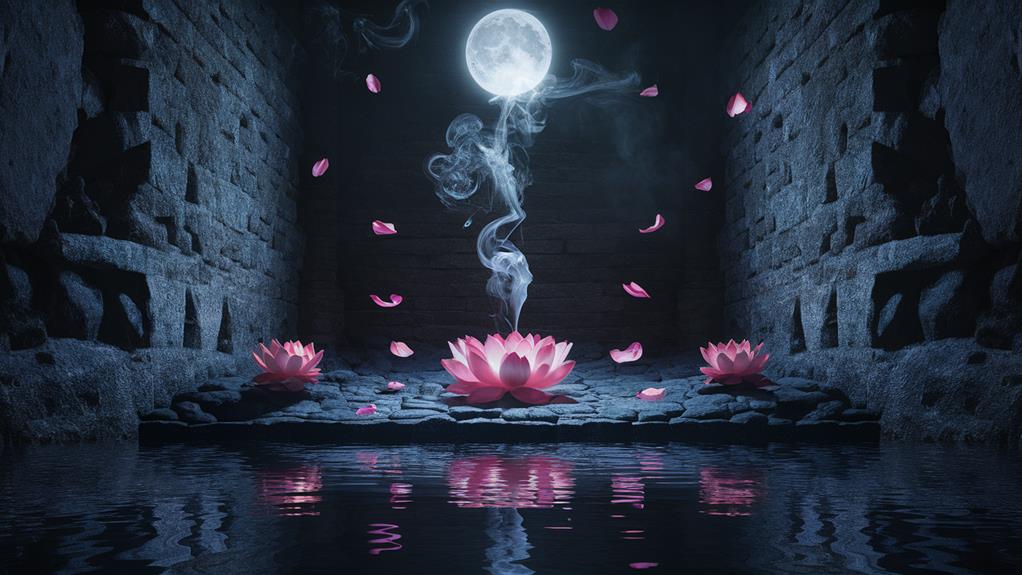
Beneath the clamor of daily life lies an ancient gateway to profound emptiness – sacred silence and stillness.
When you step away from the world’s endless noise, you’ll discover a dimension of being that transcends ordinary consciousness, where time seems to dissolve into pure awareness.
You don’t need elaborate techniques or complex rituals to access this sacred space. Instead, you’ll find it in those moments when you allow yourself to simply be – whether sitting in meditation, walking in nature, or pausing between breaths.
In this profound stillness, you’re no longer a doer but a witness to existence itself.
As you deepen into silence, you’ll notice how it’s not merely the absence of sound, but a living presence that holds infinite potential.
Your thoughts begin to settle like leaves floating to the bottom of a clear pond, revealing the vast spaciousness of your true nature.
This emptiness isn’t void of meaning but rather pregnant with possibility, where you’ll encounter the deepest truths of your being.
Through sustained practice in stillness, you’re actually stepping into the timeless dimension where all mystic traditions converge.
Conclusion
As you’ve journeyed through these nine mystical paths, you’ve discovered that emptiness isn’t an absence but a profound presence. You’ve learned that in letting go, you gain everything; in emptying yourself, you become full. Whether through meditation, contemplation, or scientific understanding, you’ve glimpsed the transformative power of the void. Now, you’re invited to embrace this emptiness not as an end, but as a gateway to deeper awareness and authentic being.



